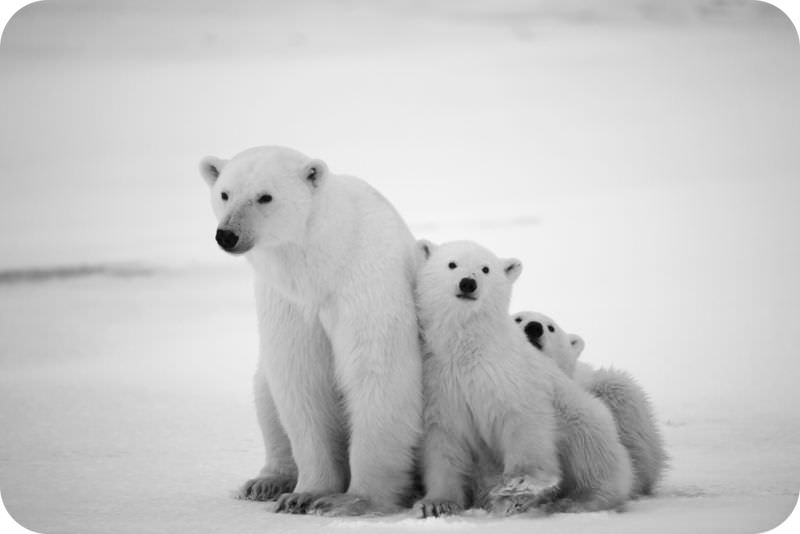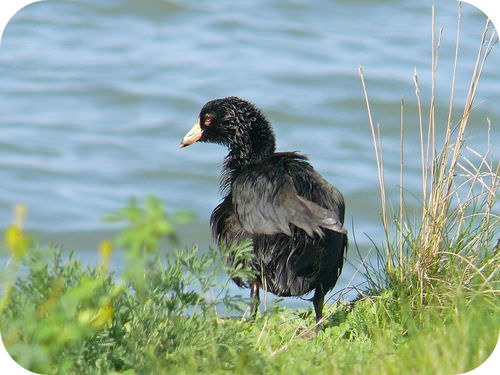12.35 Human Causes of Extinction
12.35 Human Causes of Extinction
Why are these polar bears threatened?
These polar bears are threatened because of global warming. They depend on the sea ice for their hunting grounds, and this ice is melting away. Plus bears have to make a longer and more hazardous journey to get to the remaining ice.
Other Causes of Extinction
In addition to habitat destruction, other human-caused problems are also threatening many species. These include issues associated with climate change, pollution, and over-population.
Global Warming
Another major cause of extinction is global warming, which is also known as global climate change. During the past century, the Earth's average temperature has risen by almost 1°C (about 1.3°F). You may not think that is significant, but to organisms that live in the wild and are constantly adapting to their environments, any climate change can be hazardous. Recall that burning fossil fuels releases gasses into the atmosphere that warm the Earth. Our increased use of fossil fuels, such as coal and oil, is changing the Earth’s climate. Any long-term change in the climate can destroy the habitat of a species. Even a brief change in climate may be too stressful for an organism to survive. For example, if the seas increase in temperature, even briefly, it may be too warm for certain types of fish to reproduce.
Pollution
Pollution adds chemicals, noise, heat, or even light to an environment. This can have many different harmful effects on all kinds of organisms. For example, the pesticide DDT nearly eliminated the peregrine falcon in some parts of the world. This pesticide caused falcons to lay eggs with thinner shells. As a result, fewer falcon eggs survived to hatching. Populations of peregrine falcons declined rapidly. DDT was then banned in the U.S. and peregrine falcon populations have recovered.
Water pollution threatens vital freshwater and marine resources throughout the world (Figure below). Specifically, industrial and agricultural chemicals, waste, and acid rain threaten water. As water is essential for all ecosystems, water pollution can result in the extinction of species.
A bird that was the victim of an oil spill. About 58,000 gallons of oil spilled from a South Korea-bound container ship when it struck a tower supporting the San Francisco-Oakland Bay Bridge in dense fog in November, 2007.
Finally, soil contamination can also result in extinction. Soil contamination can come from toxic industrial and municipal wastes (Figure below), salts from irrigation, and pesticides from agriculture. These all degrade the soil as well. As soil is the foundation of terrestrial ecosystems, this can result in extinction.
Soil contamination caused by petrochemical products.
Human Overpopulation
Human populations are on the rise. The human population passed the 7 billion mark in October of 2011, and will pass 8 and 9 billion probably before the middle of the century. All these people will need resources such as places to live, food to eat, and water to drink, and they will use energy and create waste. Essentially, human population growth can effect all other causes of extinction. For example, more people on the Earth means more people contributing to global warming and pollution. More people also means more clearing of land for agriculture and development. Recall that development by humans often causes habitats to be destroyed. This destruction can force species to go extinct, or move somewhere else.
Science Friday: Can Underwater Parks Protect Coral?
Coral communities are incredibly important for marine life. In this video by Science Friday, Marine scientists John Bruno and Elizabeth Selig describe the effects of local Marine Protection Areas on preserving coral.
Summary
- Global climate change is a major cause of extinctions.
- Pollution of chemicals, noise, heat, or even light to an environment can be harmful to organisms.
Explore More
Use the resource below to answer the questions that follow.
- Causes of Extinction at http://www.eoearth.org/view/article/150962/
- What is the primary cause of human-induced extinctions?
- What is considered the greatest contributor to the extinction of many species?
- What was the effect effect of the introduction of mammalian predators to New Zealand?
Review
- Define global warming. Why is global warming an issue to organisms?
- How could the high human population growth rate drive further extinctions of plants and animals?
- Give an example of how pollution can threaten organisms.
- Log in or register to post comments
- Email this page



